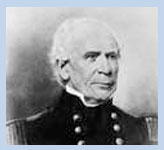 Visitor Information
Visitor Information
 Loxahatchee Battlefield Preservationists [external link]
Loxahatchee Battlefield Preservationists [external link]
 Florida Black Historical Research Project, Inc. [external link]
Florida Black Historical Research Project, Inc. [external link]

Park History
Loxahatchee River Battlefield Park is one of the most significant multi-level historic sites in Palm Beach County. Gateway to the Loxahatchee River, prehistoric and historic habitation has occurred along the Loxahatchee dating as far back as the Archaic Period over 5,000 years ago. The primary goal of the park is to preserve and protect these cultural resources, while providing education and passive recreation opportunities for the public to experience this beautiful place and its history. The first battle of the Loxahatchee, referred to as Powell’s Battle, took place on January 15, 1838.

The second battle of the Loxahatchee, referred to as Jesup’s Battle, occurred nine days later on January 24, 1838. Today, the pine flatwoods, open meadows, cypress swamps and oak hammocks are home to hundreds of native species of flora and fauna, and give visitors a sense of “Old Florida” unique to this park setting.
Powell Battle

The first battle of the Loxahatchee River took place on January 15th,1838. It was commanded by Lieutenant Levin M. Powell, of the United States Navy’s Waterborne Everglades Expeditionary Unit composed of inexperienced Naval personnel who were soundly defeated by the Seminoles. The hero of this engagement was Joseph E. Johnston who took charge and directed a rear guard action and prevented what might well have become “Powells Massacre.”
Jesup's Battle

On January 24th 1838 Major General Thomas S. Jesup, accompanied by fifteen hundred troops, met three hundred Seminoles on the banks of the Loxahatchee River in the last standing battle of the Second Seminole War. During the battle General Jesup lead a charge to the river and was wounded. The Tennessee Volunteers, lead by Major William Lauderdale, took most of the casualties. The Battle ended when Col. William Harney and his Dragoons crossed the river and outflanked the Seminoles. Outnumbered, the Seminoles fled into the swamps. Seven soldiers were killed and thirty one wounded, including the General.
After the Battle of the Loxahatchee, General Jesup petitioned Washington to allow the Seminoles to remain in the Everglades and end the war. Washington denied Jesup’s request, whereby six hundred Seminoles were captured under a white flag of truce at Fort Jupiter.